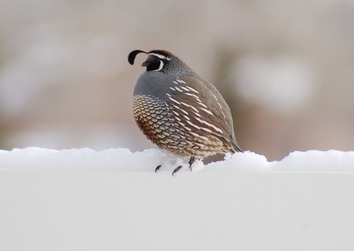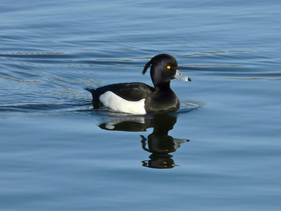The Intro

When referred to in birding, a life list is a list of all the birds you have identified in your time as a bird watcher. Each bird on your list is considered a “lifer” and is the reason for "The Big Year" which I will discuss in an upcoming blog. Some people have a list that represents the birds they’ve seen in their back yard and some have a list that encompasses all the birds they have seen worldwide. Some folks keep a journal by the window while others have a series of spreadsheets to track each location, region, and country they have visited. For most birders today, the truth lands somewhere in between where both electronic and hand written lists are used. A great many people regret not having started their life list sooner for various reasons, some as simple as forgetting when or where birds were sighted. The important thing is to START!
My list goes back to college in Santa Barbara when my zoology professor introduced me to the idea of a life list. I still have the entries from my first visit to Shoreline Park where the first bird to hit my list was a Brown Pelican, seen on Nov 4, 1989. I enjoy the fact that 26 years later I can see the details of that first sighting.
My list goes back to college in Santa Barbara when my zoology professor introduced me to the idea of a life list. I still have the entries from my first visit to Shoreline Park where the first bird to hit my list was a Brown Pelican, seen on Nov 4, 1989. I enjoy the fact that 26 years later I can see the details of that first sighting.

The Types
As I mentioned, there are several types of lists:
The Information
What should be on your list? Enter as much information as you are willing to journal, but at the very least, the species, the date and the location should be included in the information. Other items that can be listed are the number of species, the weather, the elevation, the habitat. In my experience, journaling is far better than the checklist approach as I have found that simply checking a species on a tally sheet makes it difficult to remember anything about the sighting.
For the more internet savvy folks there are apps for smart phones that allow you to use your phone for entering the information. I use the eBird mobile app which can be found at http://ebird.org/content/ebird/news/ebird_mobile_ios1/. Not only is it free, but it allows you to use the map to pinpoint location and elevation. It then allows you to place the number of species on a pre-determined list of the birds normally found in the area. When closing out a particular trip, it asks for the time spent and the distance you travelled to round out the information gathered.
The Rare Birds
One of the coolest things about birding is finding a bird that shouldn’t be where you found it. Some “lifers” that get “ticked” are thousands of miles from home. Birds the world over can end up off course for various reasons. Not unlike this Tufted Duck travelling down the west coast of North America who should have been in south Asia. These sightings add to the fun of bird watching because you just might find that “Bird of the Year.”
As I mentioned, there are several types of lists:
- The first is the Journal which can be as simple as a blank notebook from your local book store. This unguided approach is used for noting the birds you have seen and making your comments on the sightings.
- The second comes in the form of a checklist which can be found in the back of select bird Identification books. In fact, some books are dedicated to being just a list enabling you to mark off or “tick” the bird that you have seen in a region.
- The third is the spread sheet which can be put together using a spread sheet software program. This method enables you to search your list in several different ways including location, date, species, number of species, etc.
- One of the methods I use is a picture record which I share and keep on Flickr.com. This website allows for data entry and also allows you to become a “citizen scientist.” Another of my favorite sites is www.eBird.org. On this site you can also enter your data and have it stored online for the low price of “FREE.” Much like the spread sheet approach, this allows for a myriad of searches including where you spotted that species on a world map.
The Information
What should be on your list? Enter as much information as you are willing to journal, but at the very least, the species, the date and the location should be included in the information. Other items that can be listed are the number of species, the weather, the elevation, the habitat. In my experience, journaling is far better than the checklist approach as I have found that simply checking a species on a tally sheet makes it difficult to remember anything about the sighting.
For the more internet savvy folks there are apps for smart phones that allow you to use your phone for entering the information. I use the eBird mobile app which can be found at http://ebird.org/content/ebird/news/ebird_mobile_ios1/. Not only is it free, but it allows you to use the map to pinpoint location and elevation. It then allows you to place the number of species on a pre-determined list of the birds normally found in the area. When closing out a particular trip, it asks for the time spent and the distance you travelled to round out the information gathered.
The Rare Birds
One of the coolest things about birding is finding a bird that shouldn’t be where you found it. Some “lifers” that get “ticked” are thousands of miles from home. Birds the world over can end up off course for various reasons. Not unlike this Tufted Duck travelling down the west coast of North America who should have been in south Asia. These sightings add to the fun of bird watching because you just might find that “Bird of the Year.”